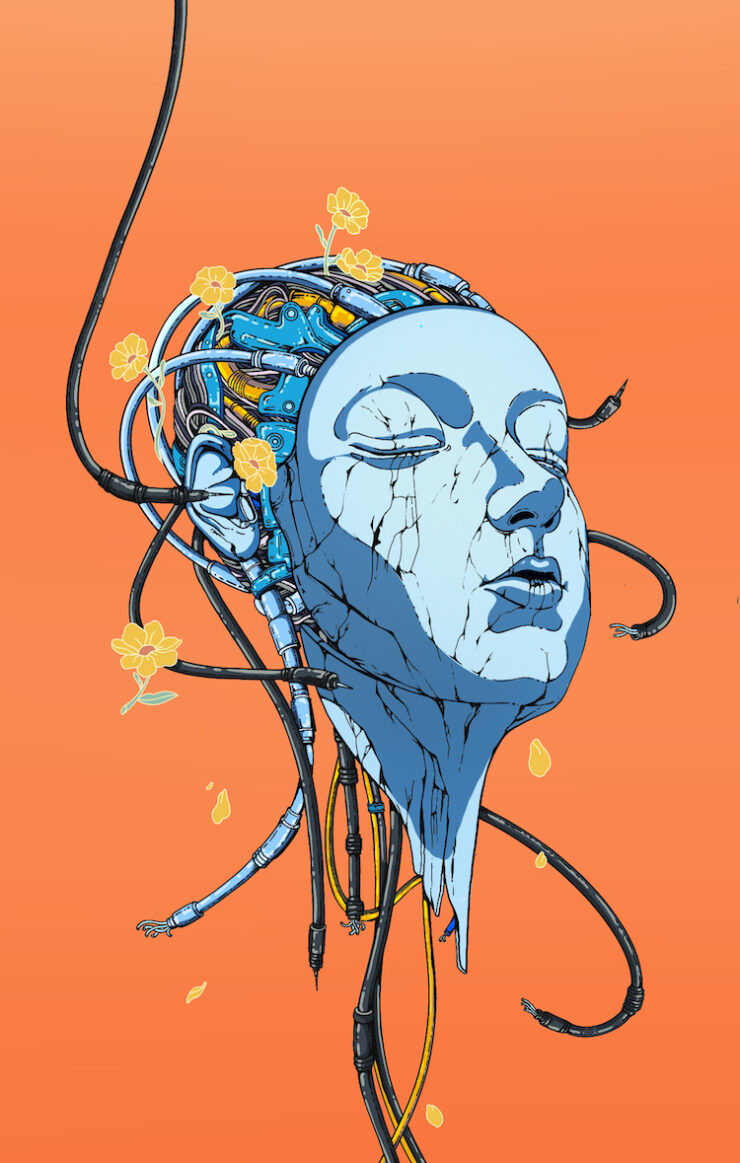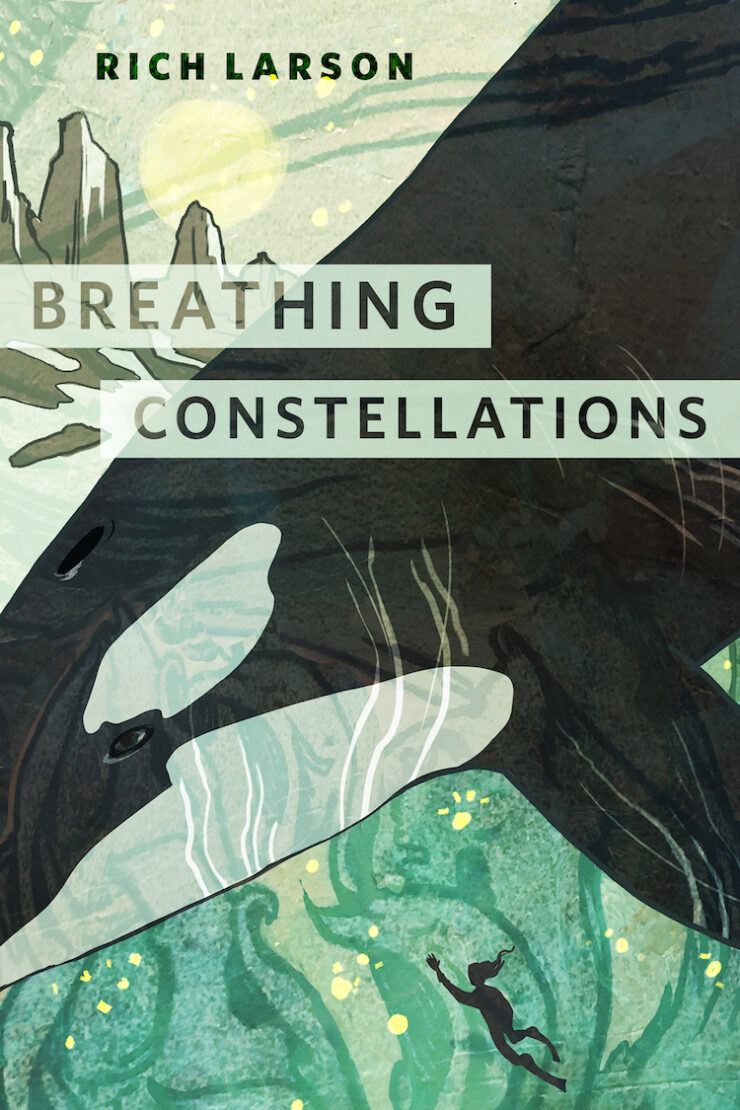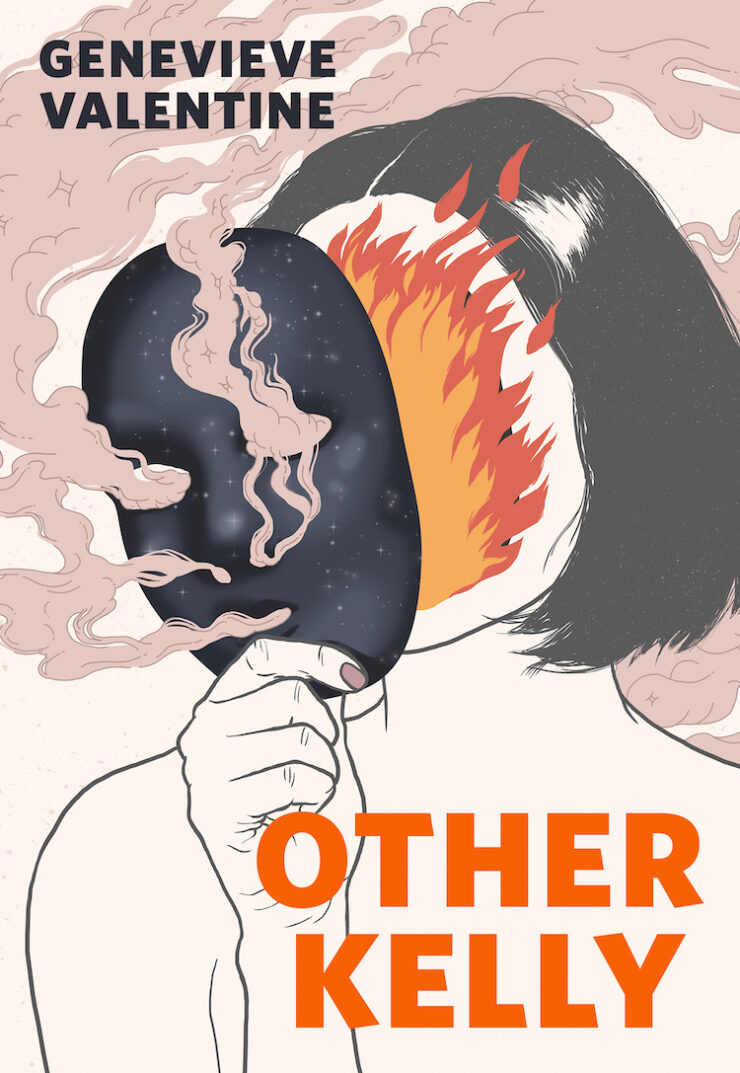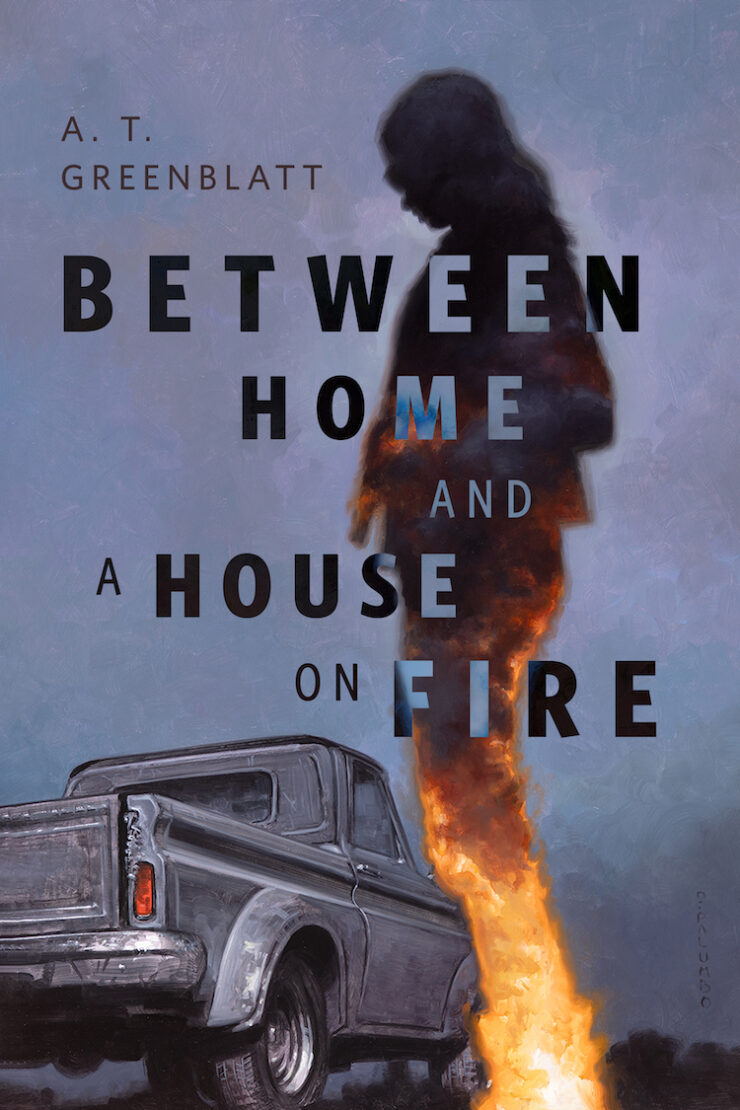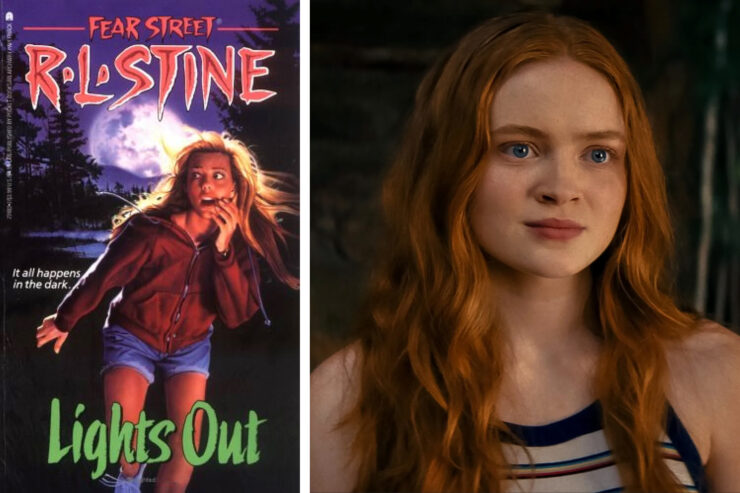R.L. Stine’s Fear Street book Lights Out (1991) and the 2021 Netflix film Fear Street Part Two: 1978 are less a case of adaptation and more like two stories that briefly glance off of one another, with the Fear Street film drawing inspiration from Stine’s book and its Camp Nightwing setting, while taking its individual story in a totally new direction, both in the narrative of 1978 and in that film’s interconnections with and contributions to the larger three-film series. Pride Month is always a great time to rewatch the Fear Street film series and celebrate the way it tackles the original book series’ erasure of queer people and people of color, developing these previously excluded characters and giving them horrifying and heroic stories of their own.
In Stine’s Lights Out, protagonist Holly Flynn is talked into working for the summer at Camp Nightwing, despite the fact that she has no camp experience and actually hates the outdoors. Her Uncle Bill owns the camps and is getting ready to launch his fourth summer there, but the past three haven’t exactly been great. As Holly recalls, “Things had begun to go wrong the first year. A fire started by lightning had burned down the rec hall. The second year there was a flood, and right after that an outbreak of measles had closed the camp for three weeks … Last year, sadly, a camper had been killed in a boating accident” (4-5). Uncle Bill is (understandably) having a difficult time finding people willing to work at Camp Nightwing and if he doesn’t turn things around this summer, he’s going to lose the camp, so when he asks Holly to take a job there as an assistant counselor, she has a hard time saying no.
The teenage counselors are largely left to their own devices and their young campers remain fairly peripheral to the action, as the teens are more invested in their own social complications and the growing mystery of Camp Nightwing. Holly’s best friend, Thea Mack, is a fellow counselor, but Thea seems to be the only person on Holly’s side (and even that support is tenuous when Thea thinks they might be in competition for the same guy). Other counselors include Geri Marcus, who Holly used to be friends with in Waynesbridge before her family moved to Shadyside and who now hates Holly, and Debra Wallach, the senior counselor in Holly’s cabin, who is constantly criticizing and berating her. Mick is a mysterious and standoffish guy, while Kit is constantly playing practical jokes, which charmingly include waving a hatchet and throwing fake snakes at people. Geri, Mick, and Kit attack Holly in the woods one afternoon, dragging her to a creek and dumping a bucket full of water and leeches over her head. Mick and Kit seem to think this is just another prank, with Kit telling Holly to “lighten up … All the new counselors have to be initiated. It’s a great camp tradition” (89), but Geri is committed to making Holly suffer as much as she can and when Holly looks to her former friend, she is horrified to see that “Geri’s face was cold, cold as the muddy water that was beginning to make Holly shiver” (89). Mick keeps Geri’s violence from escalating further and once they’ve left Holly alone in the woods, “she got to her feet and began to walk back to her cabin. She was cold and wet and miserable … They didn’t really hurt me, she thought. They only wanted to scare me … I’ll never let them know how scared I was” (91). Any promise of fun or safety at Camp Nightwing to which Holly might have been desperately clinging is gone after this encounter, however, and Holly shifts her focus to just trying to survive the summer.
In addition to the other counselors terrorizing Holly, there are a handful of potentially dangerous “accidents”: a loosened cabinet falls over on Uncle Bill, a bunk bed collapses, and canoes turn up sunk in the lake with holes punched in their sides. Bill and the others shrug these off, but when Debra turns up dead in the Arts and Crafts cabin, with her face mostly worn off by the pottery wheel, it gets harder for people to look the other way (though they do try—Bill and the cops argue that Debra’s necklace could have gotten caught in the pottery wheel, making her death just another “accident”).
Holly is assigned to go on an overnight canoeing trip with a group of campers and fellow counselors, which includes Geri, Mick, and Kit. The other two counselors assigned to the overnight trip are Sandy, a relatively quiet boy who keeps to himself and writes a lot of letters, and John, who acts pretty mysterious and has repeatedly told Holly to stay out of his business. Being stuck in the wilderness with her tormentors and a couple of guys she doesn’t know that well is pretty much Holly’s worst nightmare, which of course ends up being justified. Things are tense but mostly fine until Sandy wakes Holly up the morning after they’ve camped in the wilderness and asks her to come along with him to scout out the next section of river before they start the day’s canoeing. Once the two of them are alone together and Holly is trapped in a canoe with Sandy, the story takes a decidedly Friday the 13th turn, as Sandy confesses that he’s the one behind all of the “accidents,” telling Holly that last year his younger brother Seth died in a boating accident “because Debra was careless” (142) and now everyone has to pay. It’s unclear why he has singled Holly out as his next victim—she wasn’t even at Camp Nightwing the summer Seth died, and she’s the only one who has been taking the “accidents” seriously—but that could be an indicator of the blindness of his vengeance or a lesson for girls who ask too many questions. Holly is able to get to shore and when Sandy follows her, she climbs a cliff face, finds a bunch of snakes in a cave, and (in a real Kit-inspired move) throws one at Sandy, who loses his footing and falls, getting injured but not killed. The police and paramedics come to take him away, while the rest of the counselors and campers are taken back to Camp Nightwing where (shockingly) everything continues on as if nothing had happened, with Holly even reflecting that “I think from now on I’m going to like it here” (163).
Lights Out and Fear Street Part Two: 1978 share the common setting of Camp Nightwing and while the stories they tell there are very different, the interpersonal conflicts between the counselors is a resonant, unifying theme. Ziggy Berman (Sadie Sink) is the odd girl out in this case, with several of the Sunnyvale counselors abusing her and claiming she is possessed by Sarah Fier (though this is just a handy justification for their cruelty and violence against her). There are clear demarcations between Shadyside and Sunnyvale, with the Shadysiders occupying a lower social class, beset by bad luck, and considered “cursed,” while the Sunnyvalers live shiny, preppy lives of privilege. The tension between these two groups is played out on multiple levels: the campers internalize this unbalanced dynamic in their Color War game of Capture the Flag, where the next generation of Sunnyvalers considers it their right to degrade their Shadyside peers. When Tommy Slater (McCabe Slye) is possessed and begins mindlessly ax-murdering campers and counselors, his targets are Shadysiders. Ziggy’s sister Cindy (Emily Rudd) is struggling to get out of Shadyside, doing her best to “pass” as a Sunnyvaler through her preppy clothing, good girl behavior, and college aspirations, which creates conflict with Ziggy and with Cindy’s former friend Alice (Ryan Simpkins). The Sunnyvalers attack Ziggy and in retaliation, Ziggy attacks their ringleader, Sheila (Chiara Aurelia), locking her in the outhouse and pouring bugs from the Science and Nature cabin all over her. While some of the Shadysiders believe in the curse more than others, when Tommy gets possessed and the murderers of the past come back as well, they have no choice but to fight, flee, or die.
In Fear Street Part Two: 1978, Camp Nightwing becomes just another legend, another chapter in Shadyside’s dark and violent history that gets repeated and passed down from one generation to the next, with the camp becoming a haunted place and Tommy transformed into a depersonalized boogeyman, which is underscored by the bag Ziggy pulls over his face when he tries to kill her and which he continues to wear when he returns in 1994, as a dehumanized monster. Like Lights Out and the larger Fear Street trilogy of films, in 1978, the connection between the past and the present remains powerful and potentially destructive. In Shadyside—as in the larger Gothic tradition—the past can never be effectively laid to rest, whether it expresses itself through a witch’s curse, undead killers who return again and again, or the grief of a boy who lost his brother. The trauma of the past becomes the violence of the present.
In addition to creating space for queer characters and people of color in the Fear Street mythos, the Fear Street film trilogy also highlights an aspect of the Shadyside horrors that Stine’s novels fail to address: the aftermath. Surviving is one thing, but living with that trauma is another thing completely; the adult Ziggy, who calls herself C. Berman (Gillian Jacobs), offers a glimpse of what this life might look like. She has a series of clocks and programmed alarms that remind her when to eat dinner (microwaved macaroni and cheese, a stiff drink), feed her dog, and check the doors. She adheres strictly to a routine, with obsessive-compulsive patterns as she repeatedly turns the multiple locks on her front door, and she keeps count of how many days it has been since the massacre at Camp Nightwing on her wall calendar. She is alive, but in many ways, remains defined by that night, trapped in that moment by the violence she witnessed and her complicated emotions of grief, anger, and resignation. When Deena (Kiana Madeira) and her brother Josh (Benjamin Flores Jr.) come to her for help when Deena’s girlfriend Sam (Olivia Scott Welch) is possessed by Sarah Fier, Ziggy’s first instinct is to turn them away and batten the hatches to protect herself and her hard-won quasi-safety, but helping them ends up being the only way she can move forward (though this freedom is not without its own set of further traumas).
Fear Street and Shadyside are terrifying, but so is Camp Nightwing. While it initially seems to offer a break from the day-to-day awfulness of the Shadysiders’ lives, it ends up being the same struggle for survival in microcosm, heightened by the near-total lack of adult supervision. Getting back to nature ends up meaning running through the woods from a killer or trying to escape an out of control canoe to avoid being murdered, and even the Arts and Crafts cabin can be a house of horrors. The obliviousness and negligence of adults is bad enough, but in the world of camp, where the teenagers are more or less left to their own devices, there is no one to protect them from one another or from the horrors of the past that won’t stay buried.


